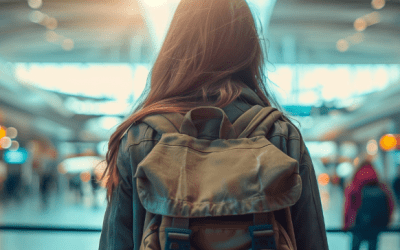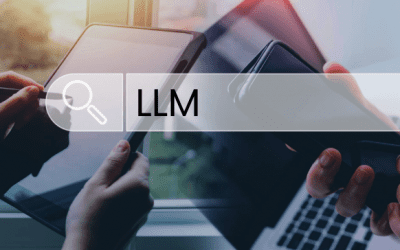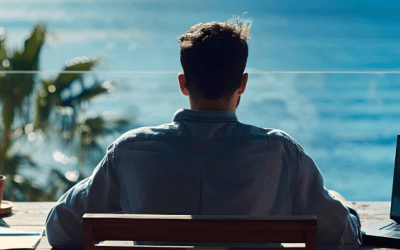Welcome back to our weekly series of brand analyses in the tourism sector, an initiative by Smartvel where we explore how major travel companies are designing their digital experiences. This series aims to identify best practices, spot areas for improvement, and most of all, inspire professionals in the industry to optimize their digital assets.
This time, we’re focusing on Ryanair, the quintessential low-cost airline in Europe. Beyond its aggressive pricing and provocative brand personality, Ryanair has a digital marketing strategy centered on pure functionality. But how does this translate into the design and performance of its landing pages? And what can the wider sector—including hotels, OTAs, and other players—learn from such a radically practical approach?
At Smartvel, we analyzed all the key elements shaping the airline’s digital experience—from design and usability to personalization, storytelling, SEO, and tech innovation.
Design and Usability: When Less Is More… Or Maybe Not
The first impression when landing on Ryanair’s site is crystal clear: this is a place to book, not to dream. The search engine dominates the screen, with no distractions. The corporate colors—yellow and blue—reinforce calls to action and create a recognizable look, although not one that’s particularly refined from a visual design perspective.
Unlike many hotel chains, where websites serve as emotional invitations to travel—with large imagery, inspiring messages, and immersive navigation—Ryanair takes the opposite approach: price and route matter most, everything else can wait. While consistent with their brand, this design can come across as cold or even overwhelming due to the amount of elements packed into a single screen.
At Smartvel, we believe there is a desirable middle ground between pure functionality and emotional design—where conversion is not compromised but is enhanced through a smoother, more engaging user experience.
Conversion Strategies: A Funnel Down to the Millimeter
One thing that can’t be denied: Ryanair knows how to convert. From the moment you land on their page, the user is pushed toward booking.
Calls to action are ever-present and well-placed across both desktop and mobile. The flight search tool, “Book now,” “Offers,” or “Check-in” buttons are strategically located to grab attention. Phrases like “Only today,” “Last seats,” or “Flights from €9.99” build urgency, tapping into scarcity and the fear of missing out.
That said, this highly pressured approach can cause digital fatigue. At Smartvel, we advocate for integrating conversion rate optimization techniques that guide users more naturally—like A/B-tested CTAs, progressive forms, or persuasive copy that focuses on the value of the trip, not just the price.
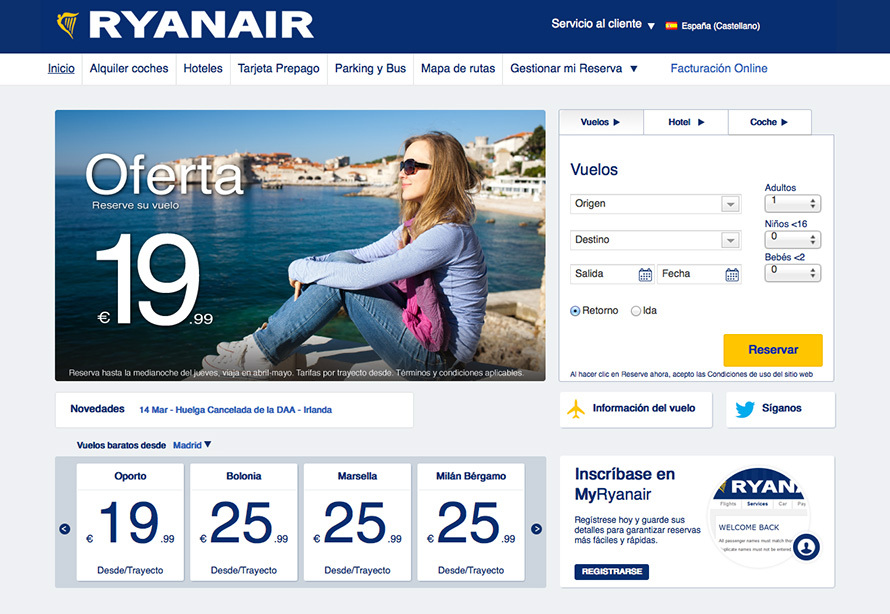
Storytelling and Visual Content: The Big Absentee
One of the biggest differences between Ryanair and premium brands—like Qatar Airways or hotel groups such as Room Mate or Praktik—lies in how they use content.
Ryanair’s site leaves no room for storytelling, destination highlights, or emotional triggers. Visuals are minimal and relegated to promotional banners. There’s no video, and inspirational content is absent altogether.
At Smartvel, we believe that even a price-driven brand like Ryanair could benefit from contextual visual content. Brief destination highlights, attractive photos, or even real testimonials could boost brand perception and build trust—without betraying their pragmatic DNA.
Integration with Social Media and Digital Marketing: A Surprising Disconnect
Ryanair is a digital powerhouse on social media, with a bold, ironic, and human tone that has made them wildly popular on TikTok, Instagram, and X (Twitter). Their engagement levels are well above industry average.
That’s why it’s surprising that this strength doesn’t carry over into their landing pages. There’s no Instagram feed, no embedded testimonials, no user comments or cross-channel promotions. User-generated content (UGC), a powerful conversion tool, is also absent.
This is a missed opportunity. Bridging the gap between social platforms and landing pages not only humanizes the brand but also increases time on site, click-through rates, and conversions. Adding dynamic sections with customer photos, quotes, or viral social posts would be a valuable next step.
Personalization and Segmentation: Just Enough, But Not More
Ryanair’s website uses geolocation to adapt language, currency, and suggest flights from the nearest airport. This basic personalization works, but doesn’t go any further.
There are no customized recommendations based on browsing history, previous searches, or user type (new, returning, frequent flyer). Nor are offers adapted to behavior or demographic segments.
At Smartvel, we work with advanced personalization technologies that adapt destination content to each user’s interests and travel intent. With Ryanair’s high traffic volume, introducing smarter segmentation layers would be a natural—and highly beneficial—evolution.
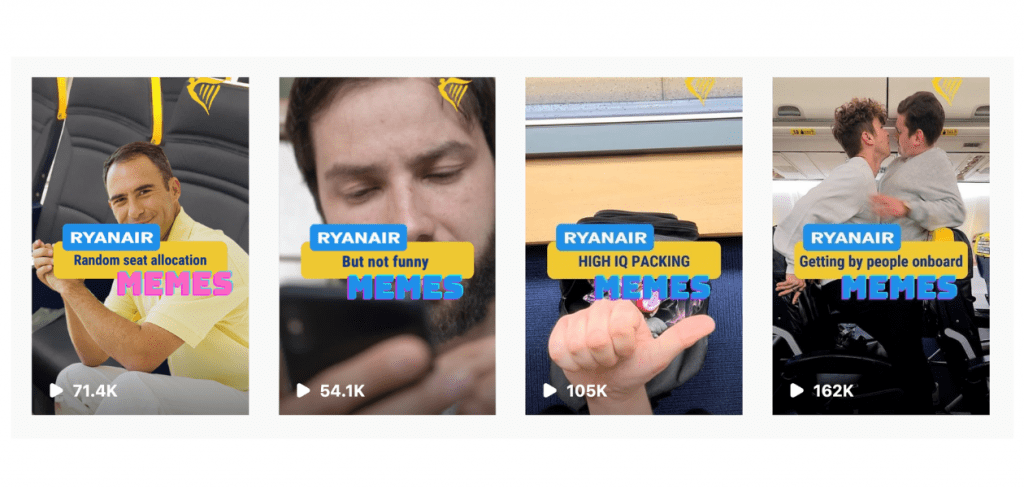
Web Design Trends: Efficiency Over Innovation
Ryanair doesn’t follow trends—and it shows. There are no micro-interactions, no progressive loading animations, no contextual menus. The experience is functional but hardly memorable.
Despite most users accessing the site from mobile devices, the layout doesn’t fully embrace mobile-first design. While technically responsive, it doesn’t make the most of touch gestures or fluid vertical navigation.
Other travel brands are already implementing modular layouts, invisible menus, dynamic typefaces, and emotional design elements. Ryanair could adopt some of these innovations to subtly enhance the user experience, without sacrificing simplicity.
SEO, SEM and Search Visibility: A Well-Oiled Machine
Ryanair enjoys a strong SEO position. According to tools like Sistrix, their organic visibility is consistently high, thanks to a well-structured site and solid tagging.
URLs are optimized, and the architecture of destination-based pages supports effective indexing. Titles are aligned with both informational and transactional intent. That said, there’s room to enrich the site with FAQs, travel blogs, or evergreen content to capture more long-tail traffic.
On the paid side, Ryanair runs expansive and well-targeted SEM campaigns that appear for nearly any search tied to cheap European flights. There’s no mystery here: they know how to compete—and win—on Google Ads.
Technology and Innovation: A Conservative Bet
From a tech standpoint, Ryanair keeps things simple. There are no conversational chatbots, no smart recommendation engines, no virtual assistants, no AR features, and no gamification elements.
At Smartvel, we see clear opportunities to enhance interaction through light-touch innovations: smart chatbots for flight changes, AI-powered destination assistants, or mini content engines that inspire and drive bookings—all without adding friction.
Conclusion: No-Frills Conversion, with Room to Grow
Ryanair has built a digital experience that’s consistent with its brand: direct, functional, and price-centric. What it lacks in inspiration, it makes up for in efficiency. But that doesn’t mean there’s no room for improvement.
At Smartvel, we believe that enriching their landing pages with visual content, better personalization, deeper social media integration, and a touch of modern design trends could truly elevate the user experience. Because even in the low-cost model, user experience matters.
We’ll be back next Wednesday with a new analysis. Maybe a premium airline? Or a boutique hotel group? Stay tuned to our blog.



